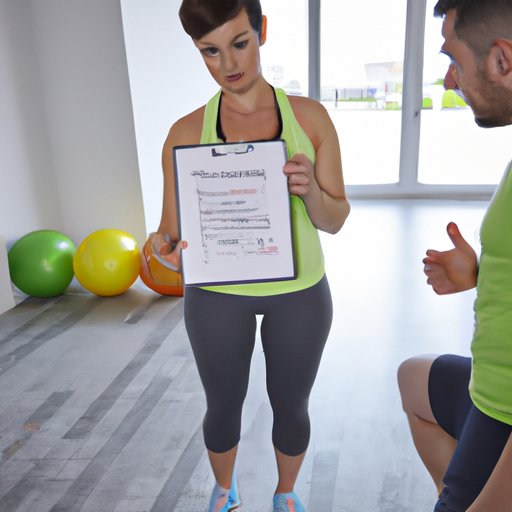Introduction
Working out can mean many different things. Generally, it refers to any physical activity that helps improve your health, fitness, and overall well-being. Whether you’re a beginner or an experienced athlete, there are always steps you can take to ensure you get the most out of your workouts. This article will provide an in-depth guide on how to start working out for beginners.

Start with a Fitness Assessment
Before beginning a new exercise program, it is important to assess your current level of fitness. A fitness assessment is a series of tests used to measure your physical abilities and help you create a personalized plan for reaching your fitness goals. Common components of a fitness assessment include body composition, cardiovascular endurance, muscular strength and endurance, flexibility, and balance.
Benefits of a fitness assessment include improved motivation, increased confidence, and better understanding of your current fitness level. Additionally, having a baseline assessment will allow you to track your progress over time and make adjustments to your workout routine if needed.
Set Realistic Goals
Setting realistic and achievable goals is key to success when starting a new workout routine. Goals provide direction and motivation, and they also help you stay focused and on track. When setting goals, it is important to be realistic and set incremental goals that are achievable within a certain timeframe. For example, instead of saying “I want to lose 10 pounds in one month,” try saying “I will lose 1 pound per week by cutting 500 calories each day.”
Additionally, it is important to make sure your goals are measurable, specific, and attainable. Writing down your goals and tracking your progress will help keep you motivated and accountable.
Choose an Exercise Routine That Fits Your Lifestyle
There are many types of exercise routines to choose from, so it is important to find one that fits your lifestyle and goals. For example, some people prefer high-intensity interval training (HIIT) while others may prefer low-impact activities like yoga or walking. Consider your fitness level, available time, and access to equipment when making your decision.
Additionally, it is important to vary your workouts and challenge yourself. Doing the same workout day after day can become boring and make it more difficult to stay motivated. Try new activities and switch up your routine to keep things interesting and prevent burnout.

Invest in the Necessary Equipment
Depending on the type of exercise routine you have chosen, you may need to invest in some basic equipment. Common pieces of equipment include resistance bands, free weights, jump ropes, and medicine balls. You can find these items at sporting goods stores or online retailers. Additionally, you may want to invest in a heart rate monitor or wearable device to track your progress.
If you don’t have access to equipment, there are still plenty of exercises you can do at home. Bodyweight exercises such as squats, push-ups, and lunges require no equipment and can be done anywhere. Additionally, there are a variety of apps and online programs that can help you get started with a home workout.

Make Sure to Warm Up and Cool Down
Warming up and cooling down are essential parts of any workout routine. Warming up prepares your body for exercise by increasing your heart rate and loosening your muscles. This helps reduce the risk of injury and improves performance. Cooling down helps your body transition back to a resting state and helps reduce muscle soreness.
Examples of warm-up and cool-down exercises include stretching, walking, jogging, and foam rolling. Aim to spend 5-10 minutes before and after your workout doing these activities.
Monitor Your Progress Over Time
Tracking your progress is important for staying motivated and ensuring you are making progress towards your goals. There are many ways to track your progress, including writing down your workouts in a journal, taking before and after photos, measuring your body composition, and tracking your heart rate.
Additionally, it is important to set milestones for yourself along the way. Celebrating small successes will help keep you motivated and encouraged to continue.
Conclusion
Working out can be intimidating, but with the right preparation and planning, it doesn’t have to be. Starting off with a fitness assessment, setting realistic goals, and finding an exercise routine that fits your lifestyle are all important steps to take before you begin. Additionally, investing in the necessary equipment, warming up and cooling down properly, and monitoring your progress over time can help ensure you get the most out of your workouts.
Taking the first step can be the hardest part, but once you get started, you’ll be glad you did.
(Note: Is this article not meeting your expectations? Do you have knowledge or insights to share? Unlock new opportunities and expand your reach by joining our authors team. Click Registration to join us and share your expertise with our readers.)
